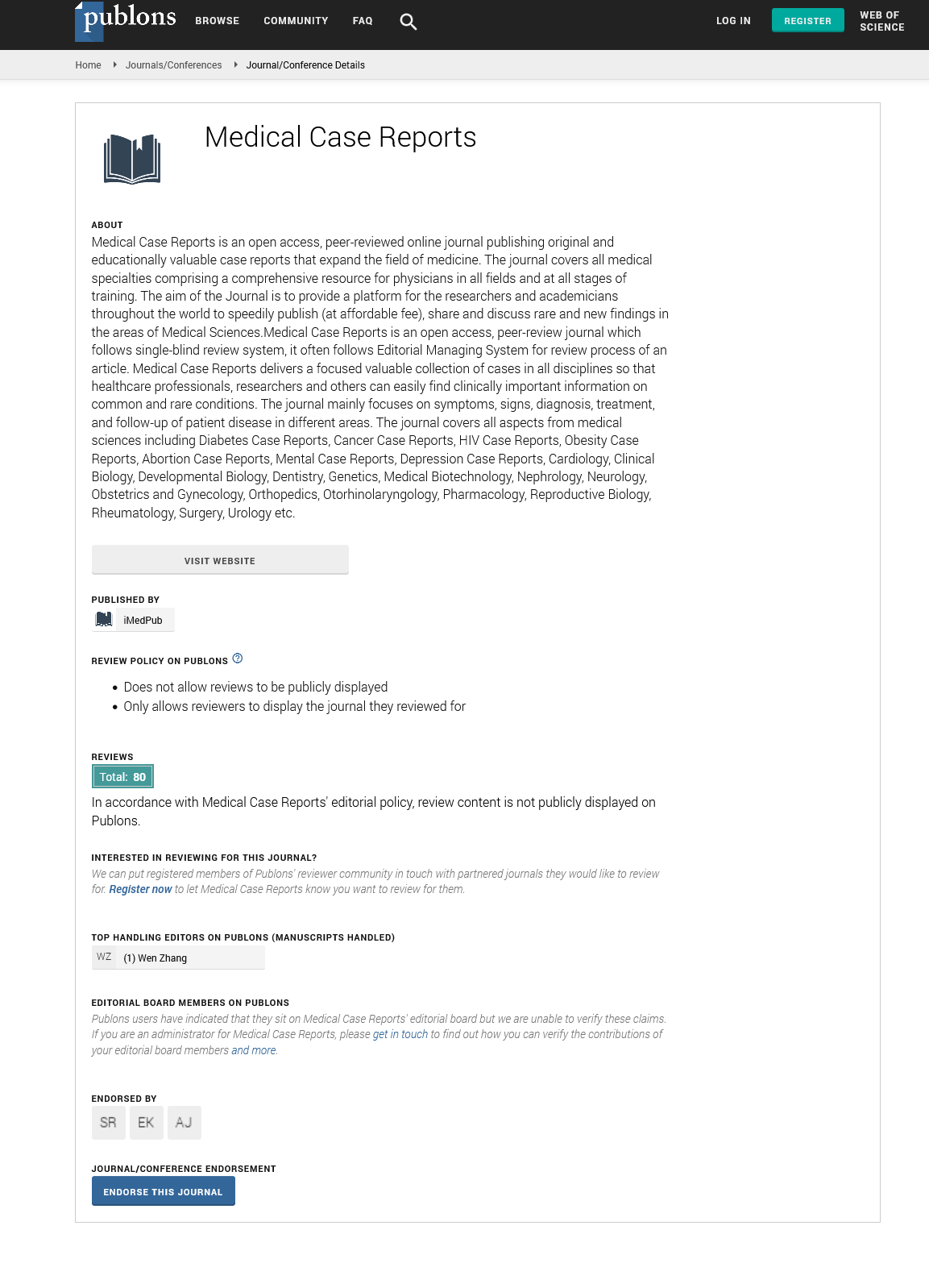ISSN : 2471-8041
Medical Case Reports
Coexistence Of Bullous Pemphigoid & Hyperthyroidism: A Case Report
8th Edition of International Conference on Clinical and Medical Case Reports
May 28-29, 2018 London, UK
Randolf A. Perez and Cecilia Ongjoco
World Citi Medical Center, Philippines
Posters & Accepted Abstracts: Med Case Rep
DOI: 10.21767/2471-8041-C1-003
Abstract
Bullous pemphigoid (BP) is one of the most common autoimmune bullous diseases, although its frequency is less than pemphigus vulgaris (0.0004/100,000 vs 0.1-0.5/100,000 population [1]. In recent prospective studies from Germany and Switzerland, the annual incidence was about 12 to 13 new cases per 1 million population [2, 3]. It is primarily a disease of the elderly with an incidence among patients aged over 90 years being 40 per 100 000 population per year. The association of bullous pemphigoid with many other diseases has been mentioned before, but no common etio-pathogenic pathway has been demonstrated [4 5, 6]. The most frequent associations are those with primary biliary cirrhosis, psoriasis - 63.4%), and an unusual condition termed multiple autoimmune syndrome (MAS), defined as the combination of at least three autoimmune diseases in the same patient . With multiple autoimmune syndrome, we observe a special frequency of various dermatological autoimmune diseases, such as vitiligo, bullous pemphigoid, and pemphigus vulgaris. We conclude that there exists an association of Bullous pemphigoid & Thyroid disease in our case being both autoimmune mediated. Based on Humbert and Dupond classification, they belong to two different types of class of Multiple Autoimmune syndrome (MAS). Although not typical of MAS, a common pathophysiologic mechanism can explain their co-existence. Both Autoimmune thyroid disease (AITD) and Bullous pemphigoid (BP) have autoantibodies belonging to IgG class. Importantly, patients with AITD are known to express HLA-B8 and the risk of its development is increased in patients with haplotypes HLA-DR3 or HLA-DQA 1*501 & HLA-DR4 while BP patients usually show HLA-DQB1, an HLA possibly associated with multiple diseases of the APS group.
Biography
Randolf A. Perez is currently affiliated with the World Citi medical Center, Philippines.
E-mail: ralfperez_md@yahoo.com
Google Scholar citation report
Citations : 241
Medical Case Reports received 241 citations as per Google Scholar report
Medical Case Reports peer review process verified at publons
Abstracted/Indexed in
- Google Scholar
- China National Knowledge Infrastructure (CNKI)
- Cosmos IF
- Directory of Research Journal Indexing (DRJI)
- WorldCat
- Publons
- Secret Search Engine Labs
- Euro Pub
Open Access Journals
- Aquaculture & Veterinary Science
- Chemistry & Chemical Sciences
- Clinical Sciences
- Engineering
- General Science
- Genetics & Molecular Biology
- Health Care & Nursing
- Immunology & Microbiology
- Materials Science
- Mathematics & Physics
- Medical Sciences
- Neurology & Psychiatry
- Oncology & Cancer Science
- Pharmaceutical Sciences
